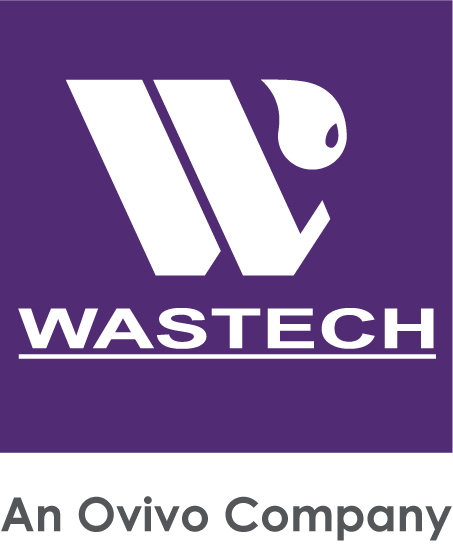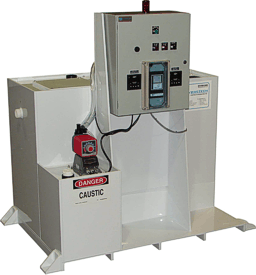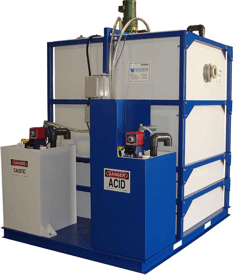NEUTRALIZATION CHEMICALS
A white paper by Wastech Controls & Engineering, Inc.
Various chemicals are available for industrial neutralization depending upon the application and whether you are neutralizing an acid or base liquid. In most cases, Sulfuric Acid (H2SO4) and Sodium Hydroxide (NaOH) will be used. The end-user must consider the concentration to be used, must carefully analyze all the chemistries involved, must review manufacturers' warnings and instructions, and must consider common safety measures for hazardous liquids. Other chemicals may be preferred based upon the amount of waste, the pH extremes expected, operating costs, batch versus continuous considerations, secondary reactions that might occur with the waste chemicals, storage issues, and other process design concerns. Wastech Controls OMEGA acid or caustic neutralization systems and LabDELTA acid neutralization systems can be designed for use with all of the following chemicals.
The most common neutralizing chemicals are:
Acids:
Sulfuric Acid (H2SO4)
Carbon Dioxide (CO2) - which converts in water to Carbonic Acid (H2CO3)
Hydrochloric Acid (HCl)
Phosphoric Acid (H3PO4)
Nitric Acid (HNO3)
Bases:
Caustic (NaOH) – also known as Caustic Soda
Calcium Hydroxide (CaOH2)
Calcium Carbonate (CaCO3) – also known as Lime or Limestone
Ammonium Hydroxide (NH4OH)
The basic principle of neutralization of a base or acid requires either hydroxide ions (OH-)
in a base for neutralizing an acid or hydrogen ions (H+) in an acid for neutralizing a base.
Neutralization with Acid
Since most chemicals listed above will work to neutralize waste streams, cost considerations will often determine the selection. Sulfuric Acid (H2SO4) is by far the most common acid available and is generally less expensive. Concentration is also an issue. Sulfuric Acid is available in 98% concentrations and may be the most economical in this form but storage issues such as the types of tanks and secondary containment available, familiarity of operators in handling hazardous liquids, the dangers of refilling storage containers or procedures for transferring from bulk containers, may suggest 30% to 50% concentrations regardless of the increased costs.
Neutralization with Caustic
Liquid Caustic (NaOH) is most common in 50% concentrations. Because of safety issues, some customers, to avoid a hazardous liquid, may opt for passive neutralization via Lime or Limestone in its solid, mineral form, despite its bulk and weight. Sodium Hydroxide is often preferred because of its solubility. Unfortunately, the neutralization process also forms salts that are very soluble in water. This high solids content can affect pump selection and maintenance. Temperature can also be an issue since 50% NaOH will begin to freeze at temperatures below 60F. This will obviously interfere with the process. Often 25% NaOH is recommended since this lowers the freezing point to below that of water.
Neutralization with CO2
In cement pouring operations large amounts of alkaline wastewater are generated. Discharge authorities demand that such wastewater be treated on site. Carbon Dioxide (CO2), which converts to Carbonic Acid (H2CO3) in water, is an excellent choice for such applications since the site is temporary, the gas is non-hazardous, can be used in-line assuming retention and mixing is considered and is self-buffering so regardless of dosage it will not lower the pH below 7.5-7.0. There are numerous operating considerations for using CO2 which Wastech Controls has mastered and an OMEGA skid mounted solution can monitor and neutralize on demand saving chemical and operating costs.
Mixing chemicals is always potentially dangerous. Consider carefully if a hazardous gas may be formed during the neutralization process. The complexity of most proprietary processes and the possible changes to a waste stream during operations makes it impossible for Wastech Controls to recommend or specify a chemical for a particular process. Wastech engineers will offer solutions, but final suitability and safety concerns must be the responsibility of the end-user at the application site. Problems with neutralizing chemicals are uncommon but must be anticipated by the end-user or operator. Many safety features are built into Wastech's OMEGA neutralization systems.
|



